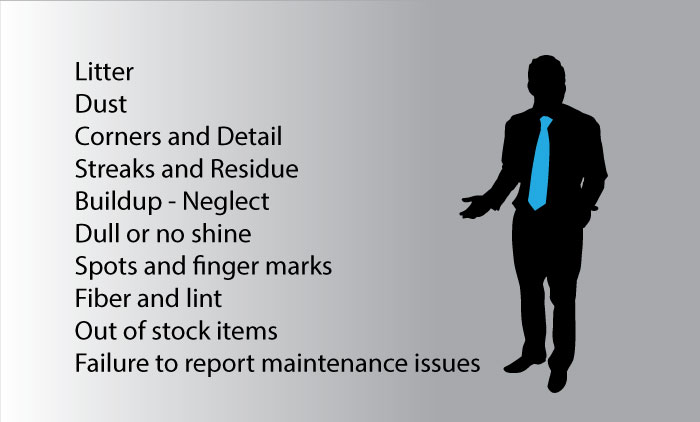Defining Clean: The Usual Suspects

The Scene of the Crime
Elliott Affiliates, Ltd. was asked to audit the cleaning program for a hospital receiving complaints about the cleaning quality of the facility. We conducted a survey of its users, and found that many had complaints about the hospital’s cleanliness, but most complaints were based on subjective opinions rather than provable data.
We realized in order to help this hospital improve, we would first need to examine any clues about what it means to be “clean” in a way that wasbased on measurable attributes. Elliott Affiliates CEO Vince Elliott said, “In short, we learned that in order to improve quality, you must manage it; in order to manage it, you must measure it; and in order to measure it, you must define it.”
4,600 Witnesses
In developing a valid definition for “cleanliness,” the Elliott team conducted a survey of over 4,600 witnesses (users), representing hundreds of buildings. We asked users to name those buildings’ most common cleaning issues. Analyzing complaint records and interview comments, we identified 80 distinct cleaning conditions, (for example, litter, dust, streaks, etc.) as part of a comprehensive list of attributes. Using Pareto analysis, we found that just ten of those 80 cleaning appearance conditions that accounted for 94.6 percent of all cleaning issues observed.
The Lineup

By narrowing the definitions of clean or dirty, using clear, identifiable attributes, we were able to make we were able to to make a clear case for solving the crime of cleaning system failure.The ability to measure a facility’s cleaning quality using objective criteria enables us to find specific cleaning issues and improve upon them far more effectively than using subjective opinions. This measurement strategy enabled Elliott to identify specific systems and training opportunities for improving cleaning performance while reducing cost for the hospital.
Your Investigation
What cleaning "criminals" (defects) do you see most often in your own facilities? Chances are they fall into the top defects listed above. As with all efforts to improve, it is important to measure cleaning attributes on a frequent basis, and to provide facility managers or service providers with feedback on the opportunities to improve results. If you do not currently have a regular performance improvement program, reach out to us. Our expert team can give you the tools you need to get started.